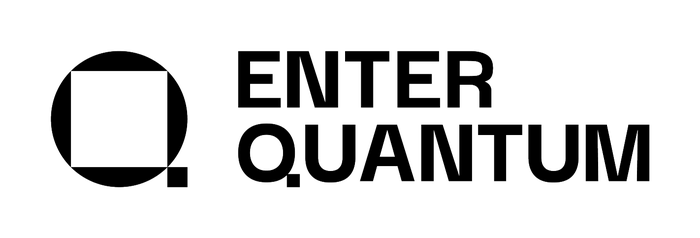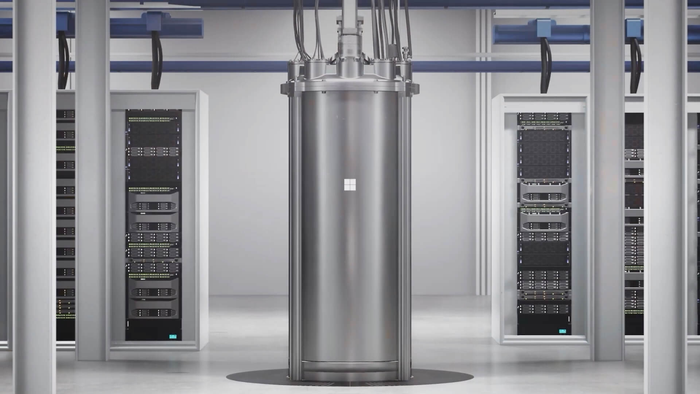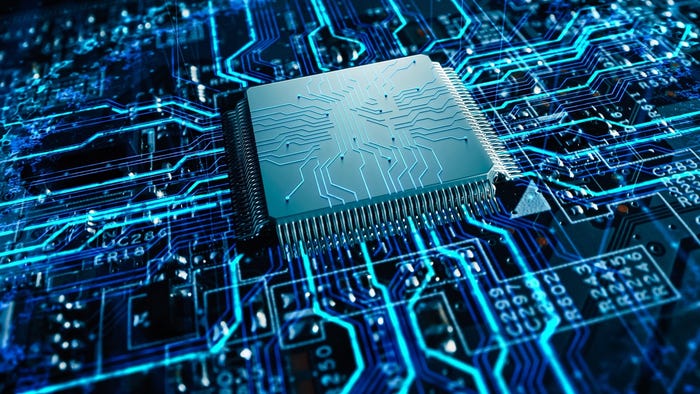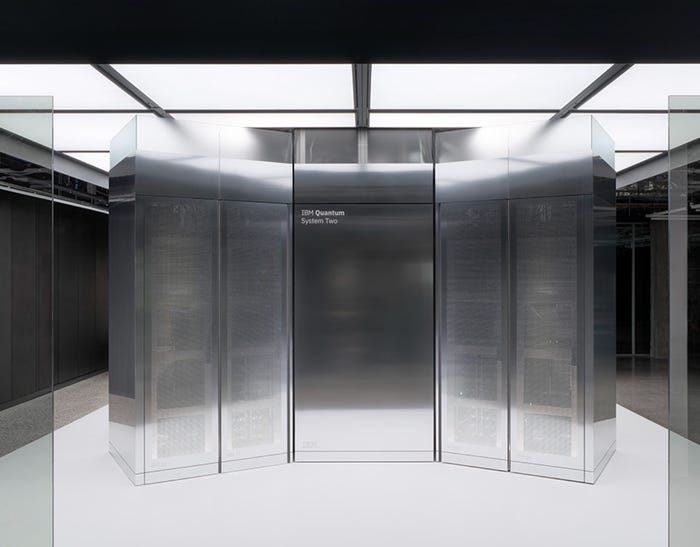
Connects decision-makers and solutions creators to what's next in quantum computing
Quantum Capabilities Forecast to Break Barriers in 2025Quantum Capabilities Forecast to Break Barriers in 2025
Insight from industry leaders into predicted quantum capabilities and error correction developments

Quantum computing is poised to transition from experimental breakthroughs to practical applications that could reshape industries in 2025. Building on significant advancements in hardware, error correction and hybrid systems in 2024, the quantum field is tackling challenges once thought insurmountable.
To illuminate the road ahead, Enter Quantum gathered insights from leading voices in the quantum computing space. From scalable error correction to breakthroughs in algorithm design, experts predict that 2025 will be a pivotal year, driving quantum technology out of research labs and into real-world deployment.
Read on for a deep dive into the trends, milestones and innovations set to define the quantum computing landscape in the coming year.
Jan Goetz, co-CEO and co-founder, IQM Quantum Computers
“We expect that progress in quantum error correction will mark a pivotal moment, with scalable error-correcting codes reducing overhead for fault-tolerant quantum computing and the first logical qubits surpassing physical qubits in error rates. Complementing these advancements, innovations in hardware will improve coherence times and qubit connectivity, strengthening the foundation for robust quantum systems.
Algorithmic development will take center stage with novel algorithms developed in the fields of finance, logistics and chemistry. AI-driven discoveries will streamline quantum algorithm design and enhanced algorithms will go beyond the well-known Variational Quantum Eigensolver (VQE) and Quantum Approximate Optimisation Algorithm (QAOA) approaches to unlock new possibilities in materials science and chemistry.
The quantum ecosystem will mature further as AI and quantum firms merge or collaborate, driving faster commercialization and adoption. Quantum platforms will emerge, offering seamless integration of classical, AI and quantum resources.
These achievements will move quantum computing closer to practical utility, reshaping industries reliant on computational power. The convergence of quantum computing and AI will solve previously intractable problems, fostering a new era of innovation.”
Dr. Alan Baratz, CEO of D-Wave
“Quantum optimization will emerge as the killer use case for quantum computing, becoming an operational necessity for businesses looking for novel strategies to maintain competitiveness. Enterprises leveraging annealing quantum computing to conquer complex optimization challenges can expect to outpace rivals that remain stuck using outdated legacy solutions. In addition, the rise in annealing quantum computing adoption in 2025 will result in an unprecedented number of real-world applications moving into production, marking the transition from quantum hype to commercial reality.
We will see a surge in interest and investment in on-premises quantum computing systems in high-performance computing (HPC) environments worldwide as researchers, academic institutions and businesses look to bolster national security and accelerate competitive differentiation. By bringing together annealing quantum computing with HPC, we will witness remarkable progress in leveraging hybrid-quantum technologies to fuel new discoveries and achieve previously unattainable business outcomes.
With advancements in quantum hardware resulting in new levels of system performance, the world's leading researchers will increasingly embrace quantum technology to achieve groundbreaking scientific breakthroughs and new discoveries out of the reach of classical computers. Areas like AI/ML, industrial optimization and materials simulation stand to benefit greatly from the continued product development progress and increasingly powerful performance of quantum systems.
The industry will finally put to rest the academic debate between gate-model and annealing quantum computing, recognizing that both technologies will be essential for different computational needs. Annealing quantum computing will maintain its advantage with optimization problems, while gate-model systems will excel in their own specialized domains once they mature enough for production use. Noting that gate-model systems are still 7-15 years away from being able to handle production workloads, only annealing systems are capable of managing production-level applications in 2025, making them the sole viable focus for commercial applications.”
Chris Ballance, CEO and co-founder, Oxford Ionics
“From Google’s achievements in quantum error correction to Oxford Ionics’ world records in qubit performance, 2024 was a year marked by incredible milestones for the quantum computing industry. We can now answer fundamental questions like ‘Can we build powerful and accurate quantum computers at scale?’ and ‘Can we correct errors in quantum systems?’ with a resounding yes.
The rapidly growing market interest reflects this turning point. Within a few hours of announcing its new Willow quantum chip, Google added over $100 billion to its market cap. Investors and organizations alike are waking up to the unprecedented compute power that quantum computers will enable. Companies are already thinking about how quantum computing might disrupt their business, the actions to take now to prepare and how they can leverage this critical new tool in the compute arsenal to gain a competitive edge.
There is now no doubt that powerful quantum computers are not an ‘if’ but a ‘when’. The question in 2025 will be who gets there first. Where quantum computing companies once battled it out over research & development, the focus has shifted to making bigger and better machines – not just trying to get the basics working well enough. And while these are hard challenges, they are known challenges.
The era of the unknown in quantum is over and the race is kicking off. For the first time, quantum computing’s ‘ChatGPT moment’ is within fighting distance – and we may even see it in 2025.
The year ahead will also see quantum computers leave the lab and head to the real world. Over the past year, we’ve seen the customer appetite for quantum computing switch on. But for the first time, 2025 will see quantum computers leave labs and research institutions and actually deploy into the networks and data centers of real-world customers. For quantum computing companies, this will be a real test of steel. The industry has been at times dominated by those who talk a good talk – this year, we’ll see which companies can also walk the walk.
It’s one thing to have a groundbreaking, powerful quantum computer that only works on its very best day when the lab conditions are perfect and when the team of PhDs operating it is on top form. But the reality is that quantum computers need to work on their worst days too – in the real world, in real organizations. The quantum computing companies who land on top will be the ones who have built for this challenge since day one.”
Bill Wisotsky, principal technical architect, SAS
“Quantum computing is set to make significant advancements in error mitigation and correction, substantially increasing the number of computational qubits. This progress will continue to revolutionize the data and AI industry. The fields of quantum machine learning, quantum optimization and quantum chemistry and biology stand to benefit the most.
Quantum computing will also advance in its hybrid development, with quantum processing units (QPUs) being further integrated with CPUs, GPUs and LPUs. QPUs will be employed for specialized problem classes or formulations. This hybridization will inspire new approaches to classical algorithms, leading to the development of superior quantum-inspired classical algorithms.
Looking ahead, investing in quantum computers promises once-in-a-century breakthroughs, unlocking unprecedented solutions and discoveries in science and physics, akin to the impact of electricity.”
Michele Mosca, founder, evolutionQ
“We will see quantum error correction advances in 2025. Four major players lead logical qubit development, with Microsoft's hardware approach gaining traction.
Quantum error correction represents a pivotal breakthrough, moving beyond theoretical concepts into practical implementation. The race to develop stable, scalable logical qubits is intensifying, with significant investments from tech giants signaling a transformative period in quantum computing.
There will also be a reassessment of quantum capabilities beyond code-breaking as logical qubit counts increase.
Quantum computing is no longer just about breaking encryption. Researchers are exploring complex computational problems in fields like drug discovery, climate modeling and advanced materials science, suggesting a broader, more transformative potential.”
Marcus Doherty, co-founder and chief scientific officer, Quantum Brilliance
“In 2025, we predict diamond technology will become an increasing part of overall industry conversation as more companies realize the potential of using diamond-based quantum systems in data centers and edge applications.
The chief advantage of diamond technology is that it allows for room-temperature quantum computing, without the need for large mainframes. It also eliminates the need for absolute zero temperature and complex laser systems. As such, diamond technology allows for smaller, portable quantum devices that can be used in all sorts of locations and environments, ultimately bringing us closer to scaling quantum devices.
We expect that more agencies will launch plans to build mobile quantum devices after Germany’s Cyber Agency awarded us a joint contract to build the world’s first mobile quantum computer.
We also expect significant advances in hybridized and parallelized quantum computing. Our partnership with Oak Ridge National Laboratory that we entered in September 2024 will continue to yield advancements in both applications.
Also, diamond quantum sensors will enter into manufacturing to address scalable markets in defense, aerospace, automotive, mining and healthcare. Specific use cases will include GPS-free positioning and navigation, geophysical and infrastructure surveying and medical imaging. This will drive demand for diamond quantum materials, components and integrated device manufacturing capabilities as well as new device design tools to support increased performance and manufacturability.”
About the Author
You May Also Like






